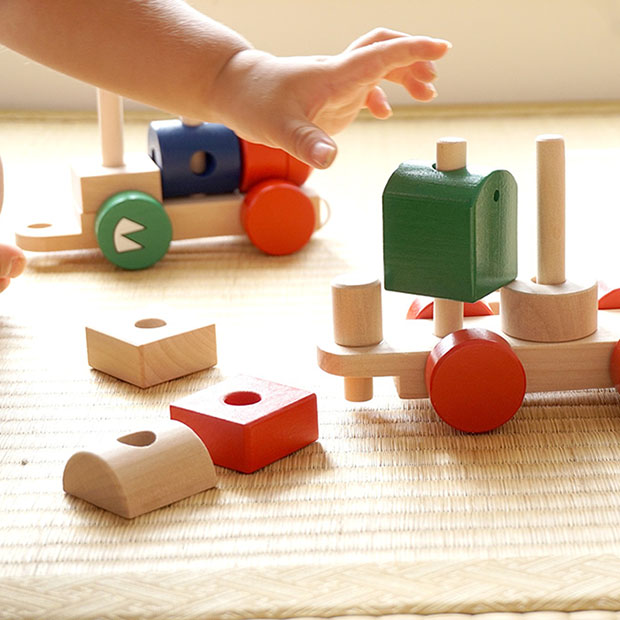Helping Child Vision Development

Did you know that babies have to learn how to see?
It might seem strange, since using our eyes is something we do automatically all day, but babies need to develop a number of visual skills in order to effectively use their eyes and process what they’re seeing, just like they have to learn how to walk and talk. Parents can be a big help to this process, particularly by choosing age-appropriate toys.
What a Baby Sees in the First Six Months
An infant’s world is made up of light, shadow, and blurry shapes. They can only effectively focus on things 8-15 inches away — coincidentally the perfect distance to see the face of the person holding them! Over time, they begin to see things more clearly and sharply, and parents can help in several ways:
- Fill their surroundings with color. It takes a few weeks before a baby’s color vision starts to develop, and once it does, they won’t be able to get enough of bright, pretty colors. That’s why they enjoy mobiles.
- Help them get used to tracking movement with their eyes by moving objects in front of them.
- Play peek-a-boo. This isn’t only to make them laugh (even though that already makes it worth doing); it’s a great way of giving them practice focusing their eyes.
The Dramatic Progress in Months 6-12
Hand-eye coordination begins to develop around month six, and parents can help by keeping Baby well supplied with colorful objects to grab and play with. Crawling also helps them learn coordination (which does sometimes come at the price of some bumps on the noggin, since they haven’t learned that their heads don’t stop at their eyes yet).
Months 6-12 are when your baby will get bored of peek-a-boo. The reason they love peek-a-boo so much in the early months is that they don’t understand object permanence yet, so it looks like magic to them, but eventually they figure out the trick: Mom and Dad aren’t blinking out of existence when they’re out of sight, they’re just hiding behind their hands! At this point, you can change the game and start hiding toys under a blanket and challenging them to find them.
Toddlerhood and Advanced Visual Skills
Toddlers gain a lot of coordination when they learn to walk, and playing with balls helps too. Comprehension and balance are big factors in a toddler’s visual skills. When they begin talking, they start putting names to the objects they see, and around age two, they might discover burgeoning artistic talent. Make sure they have access to paper and crayons! Big, interlocking blocks or wooden blocks are also great for toddlers.
Early Childhood Eye Exams
As important as it is to provide the right types of toys and play the right games with your baby, eye exams are critical too. Babies and toddlers lack the words and understanding to communicate to us if something is wrong with their eyesight, so more than anyone else, they need an eye doctor to check for them. This is why we recommend scheduling the first eye exam at six months and another around their third birthday.